Know Thy History: Tintin
When The Adventures of Tintin movie opened in America on 2011, the general public consensus around these parts was, “Whaaa—-? Who—?” I mean, I’d heard of TinTin… but that’s because I took French in high school, and knowledge of the charming boy reporter is pretty much taught in Week 2. Unless you think I’m joking about the American reaction to Tintin, Box Office Mojo reports on the numbers: despite having Steven Spielberg as director, it debuted at #5 and took in $9 Million on opening weekend. Domestically, it brought in $77 million overall. By comparison, the already much forgotten Meet The Robinsons debuted with $25 Million on opening weekend with a $97 million total take.
Fortunately, Spielberg could count on another audience: pretty much the rest of the world. Almost 80% of the profit came from non-American audiences, bringing the total take to $373 million. It’s pretty respectable. Personally, I thought the movie was fine. There were cool moments here and there — like the crash landing in the desert and the crazy chase scene through the crowded streets — but most of the movie I’ve already forgotten.
Still, this bodes well for Spielberg’s plans. He’d heard about Tintin when a review compared it to Raiders of the Lost Ark. Georges Remi, a.k.a. Herge, was the creator of Tintin, and he was likewise a fan of Indiana Jones. The two had planned to meet in 1983 to do a Tintin movie together, but before the meeting date, Herge had passed away. (Herge’s widow, though, decided to give Spielberg the filming rights.) However, nothing seemed to work out. Spielberg was dissatisfied with the progress (working on the Indiana Jones sequels instead), and eventually the rights were passed from one owner to another. However, the Herge Foundation only trusted Spielberg to make a faithful adaptation. With fellow Tintin fan Peter Jackson on board, the movie finally came together. Spielberg had planned ahead for two movies, and a third may yet be on the way.
So what is it about Tintin that captured the imagination of two high-profile film directors?

As a child, Remi was a fan of silent film stars like Buster Keaton and Charlie Chaplin, as well as the the new medium of animation. He was also a Boy Scout. He became troop leader at the Squirrel Patrol of St. Boniface School. With them, he got to voyage through all of Europe. Italy, Switzerland, Austria, Spain… and a 200 mile hike through the Pyrenees. Pierre Assouline, the writer of Herge, the Man Who Created Tintin, credits this experience with fostering Remi’s love of camping and the natural world, as well as his particular moral compass.
His scoutmaster encouraged his artistic talent. Remi’s earliest illustrations were published in Boy Scout newsletters and magazines. One such continuing cartoon, which appeared in the July 1926 issue of Le Boy Scout Belge, was a little thing called The Adventures of Totor. It was about a Boy Scout who was off to visit relatives in America, and instead found adventure.
The character we know as Tintin would make his debut in the Catholic magazine, The Twentieth Century. Tintin is a boy reporter, though a boy reporter to what publication is never revealed. Nor are his parents. Nor if he’s an orphan or not. Basically Tintin is an absolute enigma with a cowlick. He’s earnest and pleasant, but beyond that he’s not really a character. The better for the reader to put themselves in his shoes, says Scott McCloud.
The first two outings are possibly the most controversial Tintin stories ever printed. They’ve become so contentious, in fact, that in 1999 the French government convened to determine what Tintin’s particular political ideology was. (And I’m assuming that if the French National Assembly would have come on the side against Tintin… then Tintin would probably have been banned, I guess?) In the first one, Tintin in the Land of Soviets, our title character encounters the horrible conditions behind the Iron Curtain. While the book is indeed anti-Bolshevik, it should be noted that Russia-bashing is something that’s never really gone out of fashion.
The second book, Tintin in the Congo, is more problematic. Africans are portrayed as primitive and are drawn in what could be interpreted as offensive caricatures. At the same time, Tintin goes out of his way to slaughter as many animals as possible. (For example: Tintin kills a rhino by drilling a hole in its back and blowing it up with dynamite.) In his later years, Herge had tried to rectify his earlier transgressions by redrawing his panels. The book remains very controversial, though. In 2007, UK’s Commission for Racial Equality insisted that the book be pulled from the shelves.
The rest of the 24 albums, though, don’t receive quite as much negative press. The comics showcase Herge’s pioneering linge claire (“clear line”) style. The inks are of uniform width. There is no cross hatching, and shadows are kept to a minimal. Using this style, the action and compositions are uncluttered despite the presence of a lot of detail. (And Herge was very meticulous. I remember seeing a drawing of a DC-3 and being impressed that he remembered the horseshoe-shaped antenna atop the cockpit.) The coloring gains much more importance in the absence of dark spaces.
And sometimes… there’s no color at all. Herge came up with Tintin in Tibet after arriving at a crisis in his life. He was married, yet he had fallen in love with another woman. His own morals dictated that he had entered an unbreakable contract with his wife, and yet his heart was with another. This led to recurring dreams where everything was white and dead. He worked out his issues by illustrating Tintin in Tibet, a lonelier story set in the snow-covered peaks of the Himalayas.
Tintin is joined by several allies. His dog, Snowy, was originally set up to be his foil. Tintin’s actions would originally met with Snowy’s skeptical rejoinder.
Tintin met his most enduring foil (and best friend) in the form of Captain Haddock. The salty sea captain debuted in The Crab with the Golden Claws, the ninth volume of Tintin stories. Haddock had a hot temper and could oftentimes be sarcastic, but in a way it infused him with the humanity that the saintly Tintin sometimes lacked. The introduction of Haddock also introduced Marlinspike Hall. In The Secret of the Unicorn, it is revealed to be Haddock’s ancestral home and the defacto headquarters for future Tintin adventures.
Other notable members of the cast include Professor Calculus (an absent-minded physicist), Thompson (one half of the twin bumbling detectives who serve as the series’ comic relief), and Thompson (the other half).
The Adventures of Tintin took the world by storm (in places that weren’t America). Among its fans were 60’s pop artists Andy Warhol and Roy Lichtenstein, who both cite Herge among their influences. Herge’s ligne claire style has proven to be highly influential among Franco-Belgian creators. And then there are all the parodies, which Tintinophiles view as heretical and an affront to Herge’s memory. Aaaaannndddd… now I just discovered the existence of sexy Tintin parodies and Tintinophiles.
And that’s where Tintin stands today: an adventurous Boy Scout who’s an unlikely political lightning rod, an influence to many artists, and a star of a movie that Americans won’t see. Though, who knows: maybe by 2015, when the next Tintin movie is set to drop, America will have finally gotten on board with that charming boy reporter.
Posted on February 7, 2014, in comics, Know Thy History and tagged Herge, The Adventures of Tintin, Tintin. Bookmark the permalink. 14 Comments.








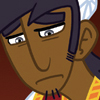









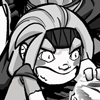


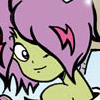




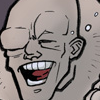
















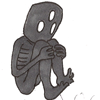





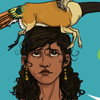





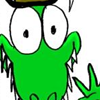


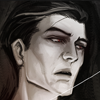
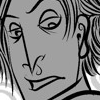



















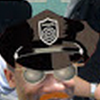





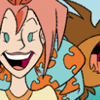




















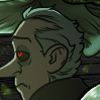


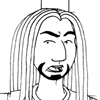


The detectives are actually called *Thomson* and Thompson (Dupont and Dupond in the original French).
B’oh!
Dont know about the rest of the european countries but here in Finland they’re as common as Asterix, Donal Duck and those kind of comics, standard stuff you find in a library really. finnish version still calls those detectives Dupont and Dupond. Much like Lucky Luke, Tintin generally got less violent the more it progressed. Earlier albums had no problem showing people getting gunned down and murdered (and the really awkward racist stuff).
One of the most brilliant moments of the animated version of “The Rabbi’s Cat”, which I highly recommended, is a sequence that parodies the colonialist and racist representations of Tin Tin in the Congo.
Not popular in America? I grew up in Minnesota, and me and my brother devoured those books as kids. Maybe my parents were trying to make us more wordly 😉
Probably! I have often found myself going through lengthy discussions to explain Tintin. It’s not quite the same task when explaining, say, Garfield.
Of course, the UK is also the country where a man was convicted for “racistly revving his engine” and which destroyed a young man’s life over a drunken tweet, while simultaneously denying foreign elected officials entry because a member of the house literally threatened with riots. The UK is a bit nutty, and if you live close by they seem less well-reasoned, and more like Mel Gibson being arrested. And most people really fail to put Tintin in the Congo into context. This was a pre-WWII comic. If you take a look at American comics of the same day, you don’t even see black people. They don’t exist. Much in the same way as American laws tried to make it seem in reality.
And I read it as a kid without developing weird ideas about Africans. Visiting Africa, and having family living there did that, instead.
I think the controversy isn’t that people fail to put it in its pre-WWII context. I think the context is more along the lines of, “Tintin is still popular with kids. Would it be responsible to have them reading things that aren’t socially acceptible?” I haven’t read it, incidentally, so I don’t have a full context of how controversial it is or not. Just the little snippets that have been posted online. The only Tintin collections I’ve seen at the comic shop — and filed in the kid’s section — don’t include that or the Soviet book.
I guess an American counterpoint would probably be the Terry & The Pirates comics, which were published in the 1930’s. I love these comics. Milton Caniff has an amazing illustrative style, and I think that the Dragon Lady is one of the best femme fatales to ever grace the comic pages. But there is the problem of the other Chinese characters. Especially Connie, who is one of the main characters and kinda hard to justify sometimes (i.e., big buck teeth, slanty eyes, incompetent, very poor English). I read these books for historical purposes, but I don’t know if I’d be able to share them with kids (the original intended audience) if I was asked to.
There were also African American characters in comics around the time of Tintin, and they were portrayed in pretty much the same way. Ebony from the Spirit comics, for example. It’s just that none of them were as much of a global phenomenon as Tintin. Or, most likely, they were censored out of existence — much like Disney’s Song of the South was.
” I read these books for historical purposes, but I don’t know if I’d be able to share them with kids (the original intended audience) if I was asked to.”
Pretty much this. In Canada, we grew up seeing Tintin on tv and in book stores (in French and English, of course), but unless you really explored the history of the comic, you didn’t hear about the controversial titles.
In my view, it’s perfectly natural and acceptable to carry the good forward and leave the past behind, without forgetting it. When I have kids, I’ll share things like Tintin with them, but for the titles that give that queasy ‘ehhh not cool’ feeling in your gut, those can be separated and wait until they’re older for them to explore if they wish.
I think to do anything else is to judge the work anachronistically, which is never useful, or otherwise it unnecessarily dismisses the entirety of something with so much value.
Well, these were comics to begin with, and it was perfectly acceptable to play up stereotypes in art back then. When I looked at a Loomis book a while ago, he showed a few of these comic charicatures to make a point about art, and among them were the typical depictions commonly considered offensive, but also Western people treated in the same style. Similarly, in Asterix et Obelix one of the running gags is an onfortunate band of pirates that always gets caught in the crossfire, and their lookout is a typical black man parody, complete with speech impediment. But he never stood out, because EVERY character in the comics is a stereotype. So you get those depictions of minorities, but also French natives with great, big, honking noses.
Sooo…
OK, Thompson and Thomson have already been mentioned (the whole point is that the names are almost, but not quite, the same… though I wonder how you refer to them in the collective in written English: in French we write “les Dupondt”, I think it appears as such, e.g. when the captain refers to them, in the albums once or twice). I would add that it is slightly anachronistic to refer to a story from 1929 as happening behind the “iron curtain”: the term, to begin with, was coined by Churchill at the end of WWII, so it can’t apply here.
Since this is “Know Thy History”, I thought I’d add some historical perspective. The first outing, “Tintin au pays des Soviets” dates from 1929; at the time, Tintin is in black and white. The first two episodes are indeed controversial, especially in the English-speaking world (“Tintin au Congo” is not listed in the back of the albums, and does not seem to be generally available in bookstores), but the third one, “Tintin en Amérique”, while redeemed somewhat by its pro-indian, sorry, pro first nations positions, isn’t more subtle, really.
But then, something happened. As the story goes (this is a simplified version), Georges Rémi (that is, R.G, that is, Hergé) made it known the next Tintin outing would occur in China, and learning that, a one Tchang Tchong-jen contacted Hergé and dispelled him of his many preconceptions about this country. This gave us “Les Cigares du Pharaon” and “Le Lotus Bleu”, which honors Tchang by featuring a character who bears his name, and when in this episode Tintin explains to the young character of Tchang how Europeans still believe that Chinese men are are these evil long-nailed people who force girls and women to wear undersized shoes and put babies on rivers at birth (complete with illustrations!), these are not far from what Hergé once believed himself. These mark the start of the “quality” Tintin, which are backed by an enormous amount of research, not just graphically, but culturally as well, much more than seemed at the time necessary for “mere” children books. This precedent would in turn have an enormous influence on all Franco-Belgian comics henceforth.
The second world war interrupted Hergé in the middle of a story (don’t worry, “Tintin au Pays de l’Or Noir” was completed after the war), and to be able to work under German occupation, Hergé had to take Tintin very, very far from any political subject. So instead of episodes like “Le Lotus Bleu” (which deals and denounces the Japan occupation of China) or “Le Sceptre d’Ottokar” (which deals with a potential uprising in the country of Syldavia, fomented by the neighboring country of “Borduria”, ruled by a one “Müsstler”, so yes, Hergé did not really like the fascist regimes either), Hergé put Tintin in high adventure settings; and while this collaboration with the Nazi occupant was questionable, this gave us jewels like “Le Secret de la Licorne” and “Le Trésor de Rackam le Rouge”.
It is also at this time that Hergé started his work to redraw the previous albums (except for “Tintin au Pays des Soviets”), which up until now were in black and white, in color, streamlining them in the process to make them fit into the new standard for bandes dessinées albums: ~45 pages, A4 format, CMYK, which has remained more or less the standard to this day.
After the war, Hergé got in trouble for his attitude during the occupation, but he was eventually able to resume work on Tintin, this time in a publication called “Le Journal de Tintin”, which would publish numerous other comics, in particular many from the followers of the “Ligne Claire”. It is at this time that Tintin went to the Moon, about a decade before Armstrong and Aldrin really did.
Hergé, in his will, forbade anyone from continuing Tintin after his death (which occurred in 1983), and this has been scrupulously enforced by his estate. This used to be the rule in Bandes Dessinées, but has now become more of an exception.
(source: mostly a special issue of comics magazine “A Suivre” honoring Hergé and recounting his career upon his death)
The controversy aspect, I think, is merely the consequence of the long run of Tintin, which does not “benefit” from the renewed mythology aspect of US comics where the earliest materials are pushed aside by more recent works. These early works reflect their time, and many publications from the 30s seem just as unacceptable in today’s context. Interestingly, for instance, the original version of “Tintin au Congo” and the comparison to the redrawn version are sometimes used to teach colonization and decolonization in history classes in France.
Anyway, besides the Tintin albums and Totor, Hergé created “Quick et Flupke”, at least the first ones, “Jo et Jozette” (5 albums), and the somewhat rarer “Popol et Virginie chez les Lapinos”. There is also his last, unfinished album, “Tintin et l’alph-art”. As far as adaptations go, the animated series from circa 1992 (which of course did not adapt “Tintin au Pays de Soviets”, avoided “Tintin au Congo” with a wide berth, and culled the native americans part of “Tintin en Amérique”, but otherwise adapted them all) isn’t half bad.
P.S.: El Santo, if you get contacted by the “Editions Moulinsart”, run. Run far, far away. They have the reputation of being overly protective of Hergé’s work ( http://english.bouletcorp.com/2013/12/19/24-hours-popeye/ ), and yes, have prevented publications from using mere panels of Tintin for illustrative and review purposes.
I would add that it is slightly anachronistic to refer to a story from 1929 as happening behind the “iron curtain”: the term, to begin with, was coined by Churchill at the end of WWII, so it can’t apply here.
I sorta kinda knew that, but I thought that the term was retroactively appropriate. From what I understand, many portions of the Western world were already eying the Soviet Union with suspicion pre-WWII (with the same fears that coincide with what I understand is in Land of the Soviets). “Iron curtain” may not have been around then, but I thought it was an apt sentiment that things within the Soviet sphere of influence were not to be trusted.
El Santo, if you get contacted by the “Editions Moulinsart”, run. Run far, far away. They have the reputation of being overly protective of Hergé’s work
I did not know this. If they do, I’ll take down the images. They were copied here from pre-existing sources using Google Image Search anyway.
That said, thank you for the additional information! It’s always a little daunting to put a “Know Thy History” when I know that there are posters with far more expertise than myself. However, all this additional information is very welcome!
In “Destination Moon”, Snowy refers to them as “the Thomson twins”; on the other hand, in “Explorers on the Moon” they’re referred to as “the two Thompsons”; and there was a pop group called “The Thompson Twins”. So the short answer to “how they’re referred to” is “inconsistently”.
It’s ligne claire, not linge claire- ligne means lign, linge means laundry. Also, nothing about the Castafiore?